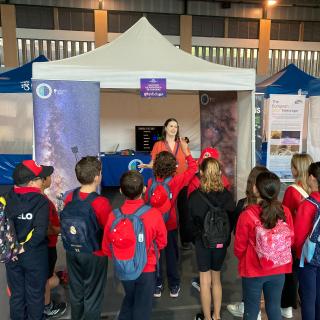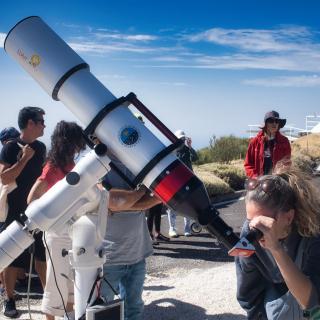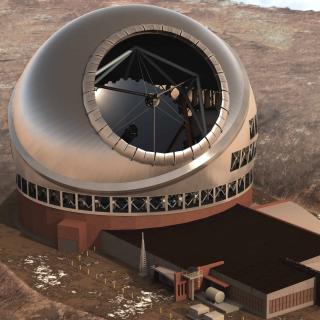It may interest you
-
 The Instituto de Astrofísica de Canarias (IAC) is once again participating in the Miniferias de la Ciencia y la Innovación en Canarias, reinforcing its commitment to popularising science and bringing astronomy closer to the Canarian public. Through its Scientific Communication and Culture Unit (UC3), the research centre is taking part in the activities organised in La Palma from 22 to 24 May. Become astro-detectives for a day Astrophysicists and popularisers Alfred Rosenberg and Alejandra Goded lead the activity ‘Astro-detectives: How do astrophysicists study the Universe?’, an interactiveAdvertised on
The Instituto de Astrofísica de Canarias (IAC) is once again participating in the Miniferias de la Ciencia y la Innovación en Canarias, reinforcing its commitment to popularising science and bringing astronomy closer to the Canarian public. Through its Scientific Communication and Culture Unit (UC3), the research centre is taking part in the activities organised in La Palma from 22 to 24 May. Become astro-detectives for a day Astrophysicists and popularisers Alfred Rosenberg and Alejandra Goded lead the activity ‘Astro-detectives: How do astrophysicists study the Universe?’, an interactiveAdvertised on -
 El IAC colabora por segundo año consecutivo con el festival de música y tendencias de Puerto de la Cruz con actividades gratuitas que permitirán a los asistentes descubrir el Observatorio del Teide y observar el Sol con telescopios especializados. El Instituto de Astrofísica de Canarias (IAC) se suma nuevamente al Phe Festival , que celebra su décimo aniversario los días 5 y 6 de septiembre en Puerto de la Cruz, con un programa de actividades destinadas a acercar la Astronomía y la investigación científica al público general. La iniciativa forma parte de IAC POP, la estrategia de divulgaciónAdvertised on
El IAC colabora por segundo año consecutivo con el festival de música y tendencias de Puerto de la Cruz con actividades gratuitas que permitirán a los asistentes descubrir el Observatorio del Teide y observar el Sol con telescopios especializados. El Instituto de Astrofísica de Canarias (IAC) se suma nuevamente al Phe Festival , que celebra su décimo aniversario los días 5 y 6 de septiembre en Puerto de la Cruz, con un programa de actividades destinadas a acercar la Astronomía y la investigación científica al público general. La iniciativa forma parte de IAC POP, la estrategia de divulgaciónAdvertised on -
 Statement supporting the selection of La Palma for the Thirty Meter Telescope (TMT) site: The Comité Científico Internacional (CCI) of the Canary Islands Observatories enthusiastically welcomes the possibility that the Thirty Meter Telescope (TMT) may ultimately choose the Observatorio del Roque de los Muchachos (ORM) on La Palma as its site. The ORM offers outstanding astronomical conditions, decades of successful international cooperation in operating telescopes, and a robust legal framework protecting its dark skies. At its meeting on 27 November 2025 on the island of La Palma, the CCIAdvertised on
Statement supporting the selection of La Palma for the Thirty Meter Telescope (TMT) site: The Comité Científico Internacional (CCI) of the Canary Islands Observatories enthusiastically welcomes the possibility that the Thirty Meter Telescope (TMT) may ultimately choose the Observatorio del Roque de los Muchachos (ORM) on La Palma as its site. The ORM offers outstanding astronomical conditions, decades of successful international cooperation in operating telescopes, and a robust legal framework protecting its dark skies. At its meeting on 27 November 2025 on the island of La Palma, the CCIAdvertised on
